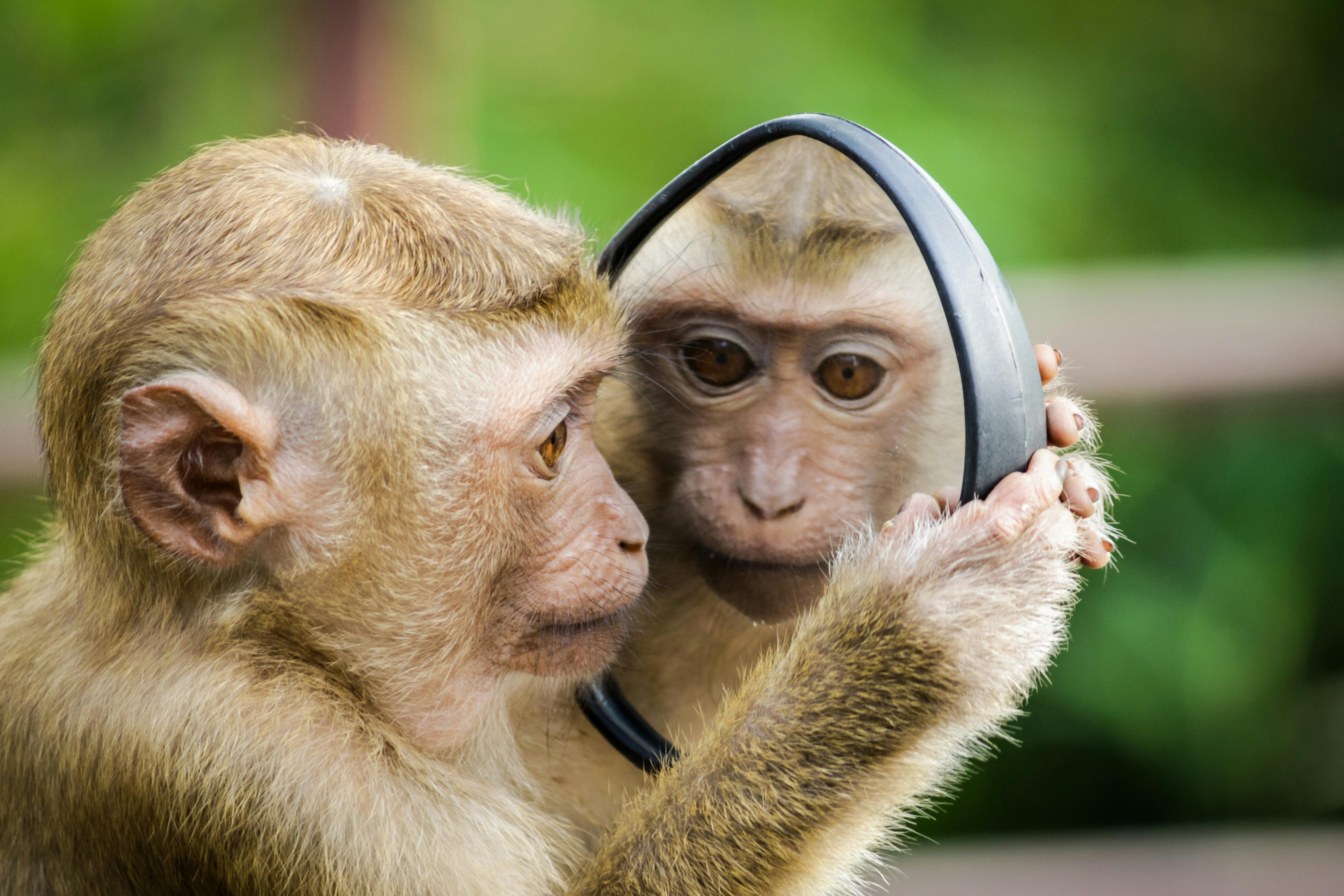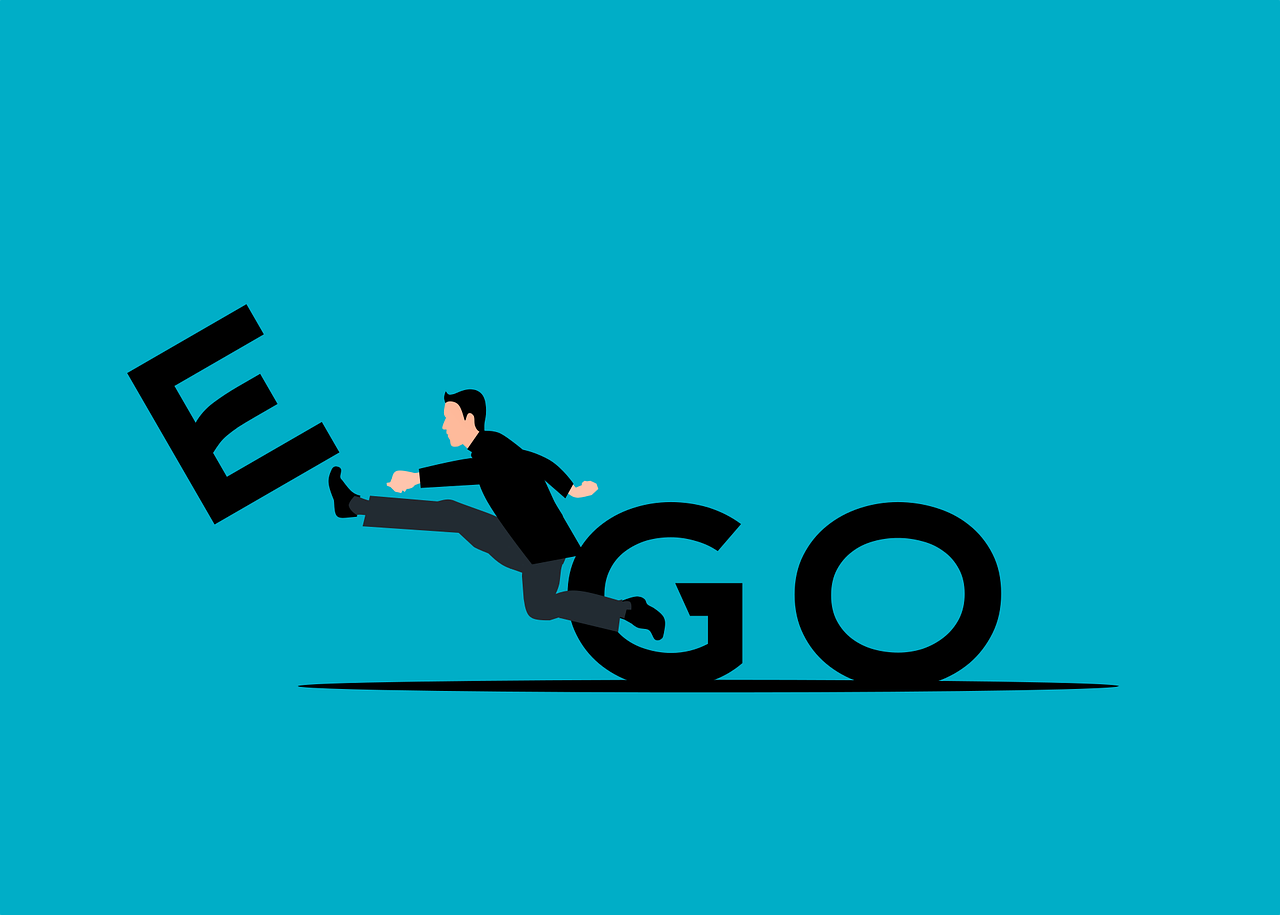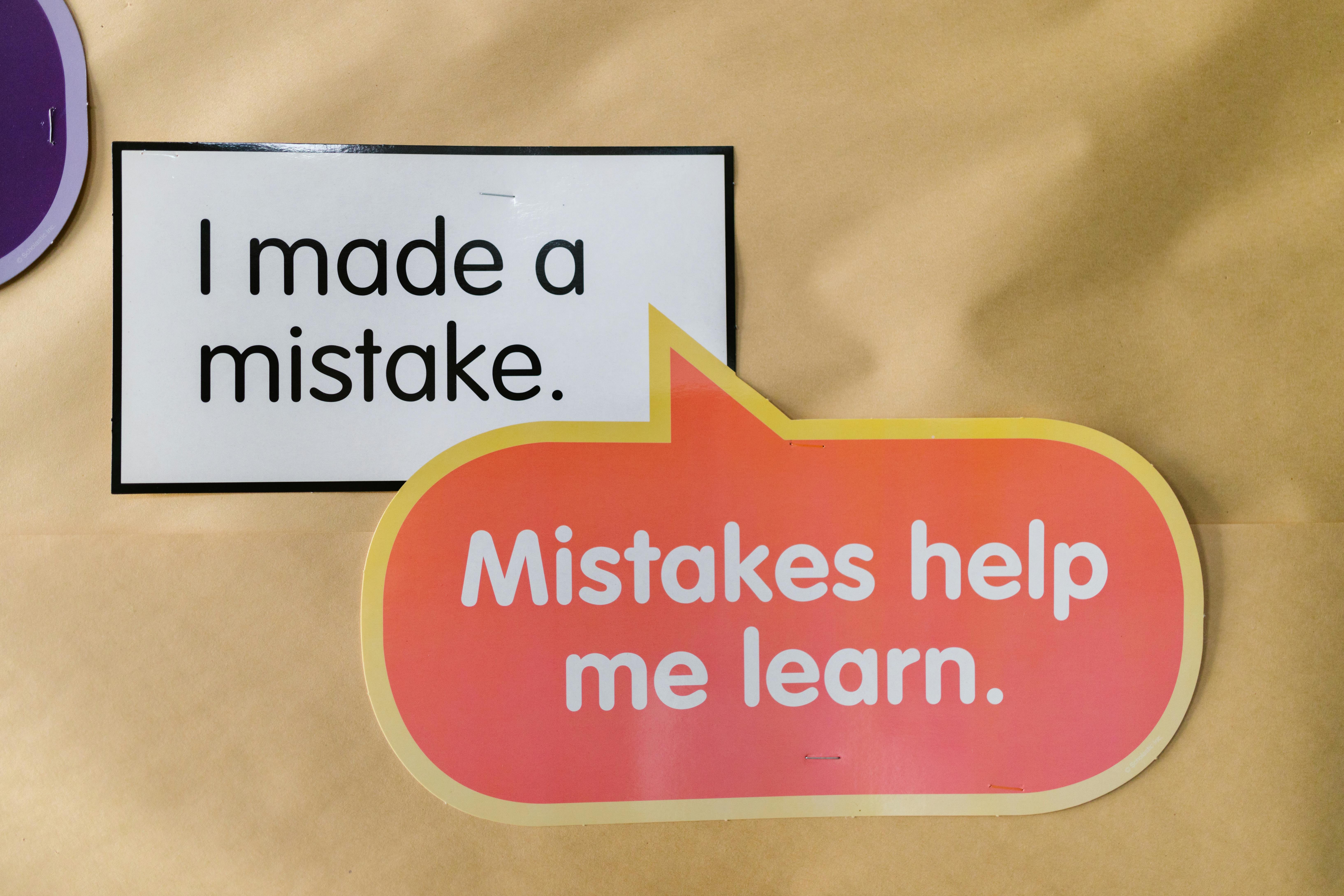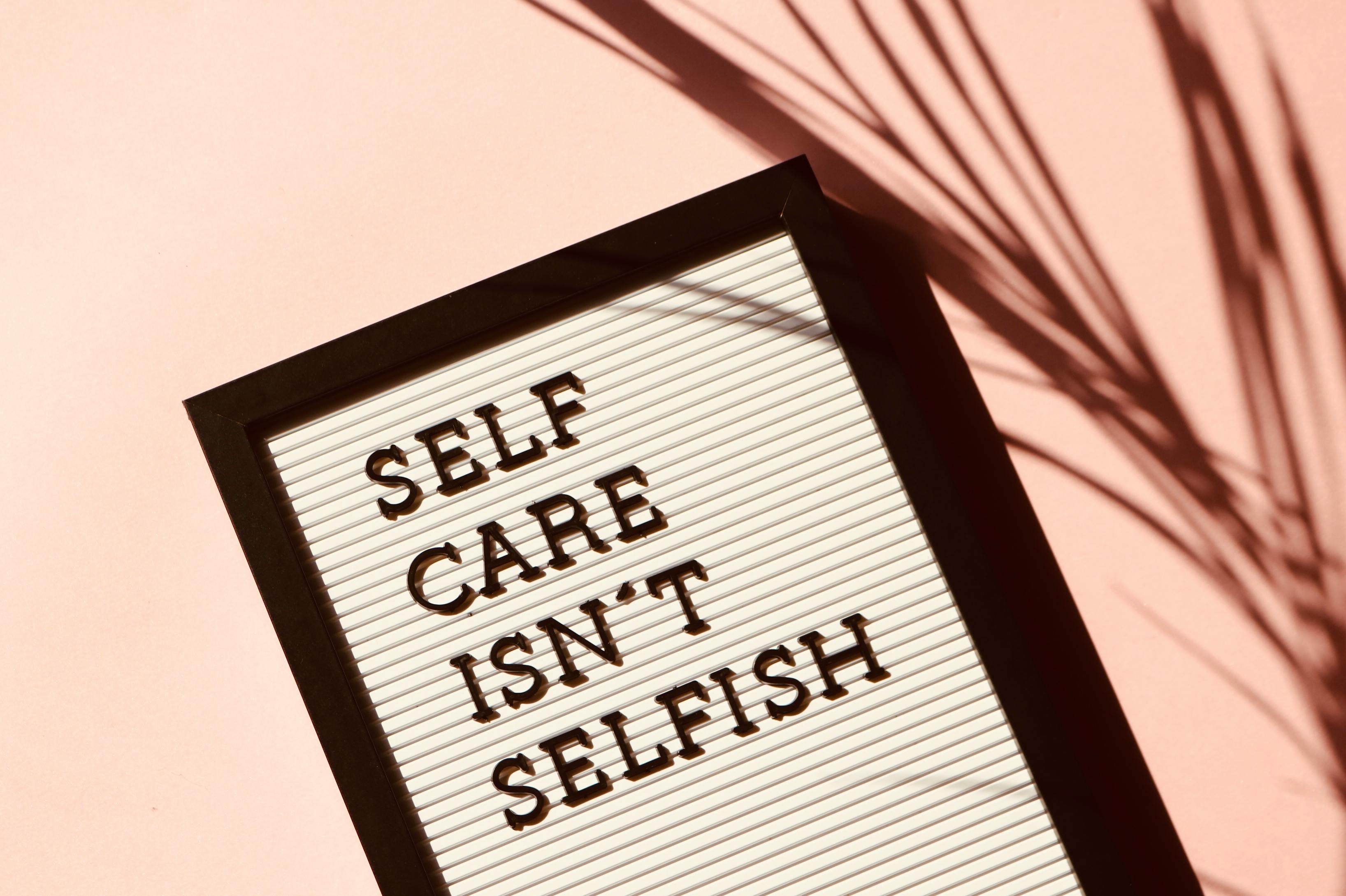Ah, the ego. That little voice inside our heads, tirelessly chattering about how people see us, what they think about us, and what we should be like. Endlessly comparing us to everyone else and forcing a hierarchy between us and the rest. It's basically like having a pushy, micromanaging parent whom we can’t escape.
But what if we could? What if there was a way to silence that incessant inner dialogue?
Actually, yoga can help us achieve just that.
Today, we’ll dive deeper into ancient yoga philosophies and wisdom that teach us how to quiet the mind and “dissolve” the ego – at least to a certain degree. Now, you might be wondering, "Why on earth would I want to dissolve my ego?" Well, that's exactly what we're going to explore.
A Note Before We Begin: We Are Not “Killing” the Ego
From the mat to our daily lives, yoga offers a path to understand and gently untangle the complex web of our ego. These teachings won’t tell us to suppress it or fight it, but rather, to understand how much it controls our lives, recognize its tricks, and smile at them. By deepening our self-reflection we can make our lives both more joyful and considerably less stressful.
Let’s start by understanding the ego in our daily lives.
The Ego in Our Daily Lives
Last Tuesday morning, I was standing in front of my closet, agonizing over what to wear. I wasn’t meeting anyone important, nor did I have a special event to attend. Yet, there I was, fretting about my appearance. One sweater wasn’t flattering, another had a boring color that didn’t work with my skin tone, while the third I had worn altogether too many times…
And so I wasted more than half an hour that day—a classic ego moment many can relate to. Our egos whisper and nudge us into believing that our self-worth is tied up in things like clothes, titles, or Instagram likes.
So, what exactly is the ego? At its core, the ego is our sense of self-importance and identity. It's the part of us that's always comparing, striving, seeking validation, and defining the self. The ego is like that parent who means well but sometimes leads us astray with their obsession over us looking and presenting our best.

The Psychological Perspective
From a psychological perspective, the ego is central to our consciousness. It's the mediator between our primitive desires (the id) and our moral compass (the superego), as described by Sigmund Freud. The ego helps us navigate the social world, making compromises and rational decisions. This is its practical bright side. However, the ego is also the source of much of our anxiety and dissatisfaction, as it constantly seeks validation and fears failure.
The Spiritual Perspective
In contrast, spiritual traditions often view the ego quite differently. Many spiritual philosophies such as those in Buddhism and Hinduism, see the ego as an illusion, a false sense of self that separates us from our true nature and the world around us. This perspective suggests that our suffering arises from the ego's desires and fears, leading us away from inner peace and interconnectedness.
The Yogic Perspective
Yoga, both as a physical practice and a philosophy, offers a unique lens to understand and transform the ego. Several concepts in yoga philosophy are related to the ego, including Ahamkara (“I-making”), Svadhyaya (“self-study” or “one's own reading”), Isvara Pranidhana (“surrendering to a higher power” or “one’s true self”), and Karma yoga (“selfless service”).
Through these concepts, yoga teaches us how to become better versions of ourselves. It is through yoga that we begin to observe our thoughts and behaviors, identifying where our ego is quietly running the show.
Let’s explore these concepts more in-depth, to understand how they are tied together and how they can help us release the controlling part of our egos.

What Does Yoga Teach Us About the Ego?
Stepping onto the yoga mat is like opening a book that's all about you. Each pose and each breath can be a sentence whispering truths about who you are beyond the surface.
In yogic philosophy, this deep dive into the self introduces us to a concept called Ahamkara, or “the ego-forming principle,” which is similar to the ego as we know it from psychology. It's like the architect of our personal identity, constantly building and reconstructing our sense of "I" and "mine."
Ahamkara is a fascinating concept. It’s that sense of being a person that’s separate from everything else. It's also the part of us that clings to achievements, relationships, and possessions as definitions of who we are. Think about it—how often have you said, "I am [insert job title]" or "I am a parent" as if these roles encapsulate your entire being and identity?
That’s Ahamkara, the I-maker, neatly packaging our complex selves into digestible labels.
Balancing Ahamkara
Ahamkara is neither good nor bad. Its positive aspects are tied to our survival. A well-balanced ego is grounded in rationality and good decision-making skills that allow us to meet our needs. Through Ahamkara we find our willpower, commitment, and drive to pursue our goals. However, it’s also Ahamkara, when unbalanced, that is the source of our intrusive thoughts, disappointment, feelings of isolation, greed, jealousy, and other negative emotions that are a product of unhealthy attachments to things and a burdensome view of our own selves.
Yoga offers us a way to observe and understand these ego-driven behaviors. When we're on the mat, struggling to hold a pose, our ego might tempt us to push beyond our limits just to impress others in the room. Or, it might encourage us to give up because we're not the "best" in the class. Recognizing these thoughts and emotions as products of the ego is the first step.
Yoga doesn't ask us to judge or suppress these feelings but to simply notice them with compassion and curiosity. This recognition is where yoga's transformative power lies. A parallel practice could be journaling your thoughts, both those that are intrusive or negative and those that over-inflate the ego, so you can observe them from some distance. This type of practice will eventually ease the burden on your heart.
Similarly, through consistent yoga practice, we begin to see patterns in our thoughts and behaviors. We notice when our ego is steering the ship, often towards choppy waters. Gradually, we learn to navigate with more wisdom and less ego, choosing paths that lead to inner peace rather than external validation.
The Yoga Mat as a Mirror: Self-Study and Reflection
So, we need our Ahamkara to remain balanced. How do we do this?
In yoga, there’s another concept that’s related to our ego: Svadhyaya.

Imagine the yoga mat as a magic mirror. When we step onto it, we get to glance into ourselves beyond our physical reflection. In this mirror, we have the opportunity to peek beyond the surface and connect with the inner workings of our “self.”
Okay, that may sound too poetic, but it perfectly captures the essence of Svadhyaya or self-study: the practice that teaches us to explore the depths of our being and understand the nuances of our ego.
This is very similar to the act of introspection in psychology. Both concepts encourage us to gently and honestly explore our “self” without judgment or self-criticism. The goal is to mindfully and actively observe and take notes.
Self-Study On the Mat
In yoga, as we move through asanas (poses), we're presented with opportunities to notice our reactions and emotions. Maybe frustration arises when we can't quite nail a pose, or maybe pride swells when we do. These moments are like signposts, guiding us to a deeper understanding of our ego's patterns and tendencies. It is also because of these moments that regular yoga practice cultivates self-awareness, which becomes stronger with every session and spills off the mat too.
Self-Study Off the Mat
Perhaps, over time, we’ll begin to catch ourselves in moments of ego-driven behavior in our relationships, work, or daily decisions. This growing awareness can empower us to act in a conscious way, and it’s amplified by mindfulness and meditation—key elements of yoga.
In meditation we’re taught to sit with our thoughts and observe them without attachment or judgment. We begin to understand that we’re not our thoughts or emotions; they're just clouds passing through the vast sky of our consciousness. We don’t have to be at the mercy of our thoughts.
The first time I experienced this realization internally and not just intellectually, I felt incredibly liberated and in control of myself. Svadhyaya, or introspection, allows us to detach from the ego's firm hold, to see things more clearly, and to respond to life's challenges with calmness and grace. While this result may come naturally, Isvara Pranidhana (see below) and Karma yoga are two yogic principles through which we may actively wish to work to dissolve the ego.

Yoga In Action: Practices to Dissolve the Ego
In the previous section, I mentioned that Svadhyaya is liberating and makes us feel in control. Yet, one of the practices to dissolve the ego is to surrender to something greater than ourselves.
Isvara Pranidhana is an elegant and powerful antidote to the ego. It’s a step that often feels counterintuitive, inciting resistance from many people’s egos, but it is the foundation of true transformation.
1. Isvara Pranidhana: Surrendering Our Need to Control
Isvara Pranidhana leads us to acknowledge that we’re part of something much bigger – the vast, interconnected system that is humanity. We need to surrender to become more connected (united) with what we perceive as bigger than us, and we shouldn’t consider it defeat or the relinquishing of our power.
Being Big In Our Unity
Keep in mind that while yoga does not necessarily champion the idea of a god-like omniscient being, this concept does support the idea that there’s something more, something bigger than each individual being. Based on our personal beliefs and worldviews, this could be interpreted as God, higher forces, the universe, nature, humanity, collective consciousness, or something else.
This surrender is a form of trust or faith that we can let go of the need to control every aspect of our lives and that everything will be okay.
Applying Isvara Pranidhana On and Off the Mat
On the mat, this could mean releasing the need to perfect a pose, letting go of competitive thoughts in a class, or simply allowing our breath to guide our movements. Off the mat, we may finally be able to release the ego's need to control, to be right, and to be seen as “the best.” Instead, we can make space for something more authentic and peaceful to emerge.
The Psychological Benefits of Isvara Pranidhana
The psychological benefits of an Isvara Pranidhana practice are profound. By reducing the influence of the ego, we feel less stressed, more in tune with others, and more capable of going through life's ups and downs with a calm, centered disposition. Our relationships with others will likely improve as we become less reactive and more empathetic. Finally, we’ll reach a point where we feel a sense of inner peace that doesn't depend on external circumstances.

2. Karma Yoga: Transforming the Ego Through Compassion and Community
The second practice through which we can dissolve or transform our ego is Karma yoga or “selfless service.”
What Karma Yoga Teaches Us
Karma yoga teaches us to act without attachment to results. It's about doing good for the sake of goodness and serving others without expecting anything in return. Acting selflessly can be a powerful tool for dissolving the ego. It shifts our focus from "What's in it for me?" to "How can I help?" It is a gradual yet transformative shift. Karma yoga challenges the ego's perspective that revolves around personal gain, recognition, and comparison.
Karma Yoga in Everyday Life
Let's consider some real-world examples in the context of a yoga community.
Imagine participating in a yoga event organized for charity. The emphasis is on collective effort and contribution rather than individual prowess. Or think about teaching yoga to those who might not have access to it – children in underprivileged schools, seniors in care homes, or inmates in correctional facilities.
These small acts of service connect us with our community, our environment, and the world in general. Beyond this, they foster a sense of belonging, nurture empathy, and build a community where the collective good overshadows individual ego. Here is where the boundaries of “I” and “mine” versus “you” and “yours” blur, and a beautiful transformation begins. We start to appreciate the interconnectedness of all beings, recognizing that helping others is, in essence, helping ourselves.
A Caveat: Not Getting Lost in Being “Good”
Keep in mind that while Karma yoga is an amazing method to balance the ego and feel more connected with the community, it's also one with a big ego trap. Helping others is rewarding for us and makes us feel good, which in turn can inflate our ego if we start to build our identity around these actions. The goal of Karma yoga is to help others not because it will make you a good person, but because your community needs it.
The final lesson is this: our true nature is not separate or superior to others but is intrinsically connected to the whole.
And that is how we transform or dissolve the ego: not by suppressing it or fighting it, but by expanding it into a wider, more inclusive sense of self.
Psychological Perspectives on Yoga and the Ego
An often-cited and interesting study published a few years ago challenges the view that yoga and meditation quiet the ego. According to the researchers, yoga teaches us how to dissolve the ego but the practice itself contradicts the self-centrality principle in psychology. This principle states that practicing any skill will boost our ego, not reduce it, and the findings of this study support that. Basically, learning to dissolve the ego, would in itself, boost the ego!
So, what now? What can we learn from this?

Motivations for Practicing Yoga
Why we practice yoga matters – at least when it comes to personal development. On the one hand, yoga encourages us to let go of the ego, but on the other, the very act of mastering yoga asana, meditation and other mental health techniques, can inadvertently feed into the ego's desire for achievement and recognition. “I’m more zen than others,” is an example of the ego talking. Comparison to others is one of the biggest symptoms of an inflated sense of self.
It's a delicate balance, where the intention and mindset behind our practice become of paramount importance.
Are we on the mat to compete, to show off, or to attain some level of perceived perfection? Or are we there to truly connect with ourselves, to observe our minds and bodies without judgment, and to embrace the principles of non-attachment and humility?
This reflection brings us back to the core of yoga philosophy. Some may just utilize yoga for the asana practice – as a sport – but when we commit to yoga fully and approach it with awareness and authenticity, yoga becomes a spiritual and psychological journey too.
In addition, many experts in the field of mindfulness often highlight the relationship between yoga, mindfulness, and ego reduction. Jon Kabat-Zinn, a pioneer in mindfulness-based stress reduction, emphasizes the power of mindfulness in observing our egoic patterns without judgment or attachment. Observation is the first step in reducing the ego's grip on our psyche.
Balancing the Ego, Not Erasing the Ego
It's also essential to debunk a common myth: the idea that having no ego at all is the goal.
Having no ego is not good!
Psychology suggests a healthy balance. A well-adjusted ego is necessary for functioning effectively in the world. It's about harmonizing, not erasing our ego. Yoga and mindfulness practices help in achieving this balance, transforming the ego from a loud, domineering force into a quiet, helpful guide and companion.

The Path Ahead
While there’s so much more that we can say on this topic, I hope that this introduction and exploration have helped with your understanding of the ego and yoga’s role in living a fulfilling life with it.
The ego is our sense of who we are in this world. It’s neither good nor bad. When unbalanced and left to its own devices, it can steer us in the wrong direction. Yoga, through self-study, surrendering, and selfless acts, can help us transform the ego into a more connected whole, one that has a broader sense of self beyond the scope of our own body and being.
Dissolving the ego isn't about losing ourselves. On the contrary, it's about finding our true selves – the selves that exist beyond titles, beyond praises, and beyond the fleeting opinions of others. In this discovery, we may find a wellspring of joy and serenity that could improve every aspect of our lives.
This is why I encourage everyone to explore their own relationship with the ego through the lens of yoga. It’s a truly intimate and rewarding experience that promotes personal development and self-care. The challenges will help you find strength, while the heightened awareness will bring you peace in the knowledge that you are more than your ego, more than your thoughts, and more than the sum of your experiences.



Comments
Existing Comments